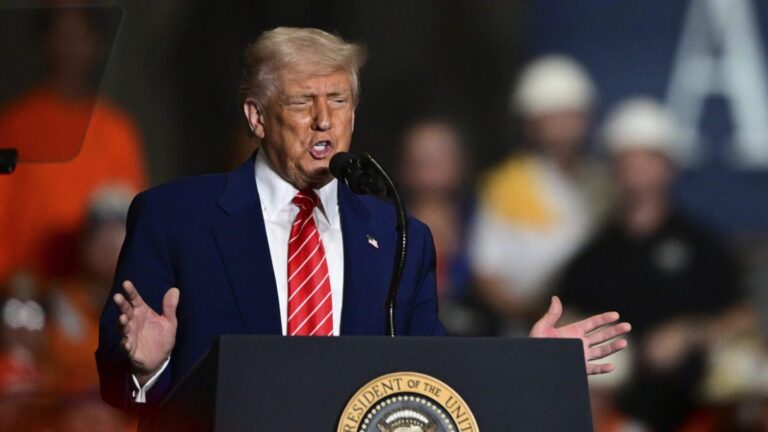As the 2024 presidential election recedes into history, the Republican Party—and particularly its MAGA faction—are already setting their sights on the 2026 midterm elections. With former President Donald Trump’s influence reshaping GOP dynamics and a fully energized MAGA base mobilizing for the coming political battles, questions loom over the party’s ability to maintain its hold on power. This article examines the evolving landscape of the Republican Party, the strategies being deployed, and the challenges ahead as the GOP prepares to redefine its future and solidify its control in American politics.
The Resurgence of MAGA Influence and Its Impact on GOP Strategies
The MAGA movement, once considered a fringe element within the Republican Party, has now solidified its position as a dominant force shaping GOP strategies. With former President Trump continuing to command a fiercely loyal base, the party’s leadership faces mounting pressure to align closely with MAGA principles to maintain electoral viability. This realignment is visible not only in candidate selections but also in policy priorities that emphasize populist themes, economic nationalism, and a hardline approach to immigration and law enforcement. The influence of MAGA has also redefined Republican messaging, prioritizing direct voter engagement through social media channels and rally culture, which energizes grassroots supporters but also risks alienating moderate conservatives.
Key tactical shifts under MAGA’s resurgence include:
- Candidate Vetting: Preference for staunch Trump loyalists over traditional Republican stalwarts.
- Policy Platform: Intensification of “America First” policies, including trade protectionism and border security.
- Campaign Strategy: Emphasis on mobilizing base voters with a combative narrative against perceived “establishment” and liberal opponents.
| Aspect | Pre-MAGA GOP | MAGA-Driven GOP |
|---|---|---|
| Party Leadership | Traditional conservatives | Populist loyalists |
| Policy Focus | Centrist policies | Nationalist and protectionist |
| Voter Engagement | Standard campaigns | High-energy rallies & social media |
Navigating Internal Divides Within the Republican Party
As the Republican Party faces the 2026 midterms, internal factions have become increasingly visible, challenging the GOP’s capacity to present a united front. The divide chiefly revolves around traditional conservatives and the MAGA wing, whose priorities often diverge sharply on policy and strategy. This schism affects decision-making processes, party endorsements, and candidate selections, creating a landscape of competitive tension within the party.
Key fault lines include:
- Policy Priorities: Fiscal conservatism versus populist economic nationalism
- Candidate Loyalty: Establishment figures versus Trump-aligned loyalists
- Approach to Governance: Pragmatic compromise versus ideological purity
These divisions manifest not only in Congressional caucuses but also across grassroots networks, complicating messaging and voter outreach efforts. The GOP’s ability to reconcile these positions or effectively leverage them will be critical in maintaining electoral strength amid shifting political dynamics.
| Faction | Core Principle | Influence in 2026 |
|---|---|---|
| Traditional Conservatives | Limited government & fiscal restraint | Moderate |
| MAGA Loyalists | Populist nationalism & ‘America First’ | Strong |
| Libertarian-leaning Republicans | Individual liberties & deregulation | Emerging |
Targeting Swing States and Voter Mobilization Techniques
As the 2026 midterm elections approach, the MAGA movement is sharpening its focus on battleground states where the political balance is notoriously volatile. The party’s strategists are deploying advanced data analytics to identify swing districts with razor-thin margins, targeting voters who previously showed ambivalence or backed the opposition. Advertising budgets have been realigned to maximize impact in places such as Pennsylvania, Michigan, and Arizona, while grassroots organizers ramp up efforts to ensure a highly motivated turnout on election day. This state-by-state precision reflects a hardened GOP resolve to reclaim and hold ground by focusing on local concerns intertwined with national narratives.
Mobilization efforts are increasingly streamlined and tech-driven, using a mix of the following tactics:
- Micro-targeted digital campaigns tailored to social media platforms frequented by younger and first-time voters.
- Robust volunteer networks coordinating phone banks, door-to-door canvassing, and event-driven voter education drives.
- Incentivized voter registration initiatives that leverage community influencers and cultural touchpoints.
- Real-time voter engagement tracking to quickly address turnout dips and refine outreach strategies.
| Swing State | Key Issue Focus | GOP Voter Turnout Goals |
|---|---|---|
| Michigan | Economic Recovery & Jobs | 65%+ |
| Pennsylvania | Suburban Safety & Taxes | 70%+ |
| Arizona | Border Security & Immigration | 68%+ |
By layering personal outreach with data-driven insights, MAGA operatives aim to reinvigorate the base while peeling away undecided voters, setting the stage for a high-stakes battle in states that could once again determine the national political trajectory.
Policy Priorities Shaping the 2026 Midterm Campaigns
As the 2026 midterms approach, the GOP is consolidating around a platform that reflects the core tenets of the MAGA movement, signaling a shift from traditional conservatism to a more combative posture on several key issues. Central to their agenda are immigration enforcement, aggressive economic nationalism, and a rejection of globalist trade agreements. These policy priorities aim to energize the base by emphasizing border security and American manufacturing, while attacking what they describe as elitist bureaucracies that undermine national sovereignty.
In addition, the GOP is doubling down on cultural and social issues that resonate with their core supporters. Issues such as school curriculum reforms, voting laws, and law-and-order policies are positioned as a defense against what they frame as leftist overreach. Key priorities include:
- Restricting Critical Race Theory in public education
- Implementing stringent voter ID laws to safeguard election integrity
- Supporting law enforcement with increased funding and legislative protections
- Promoting energy independence through expanded fossil fuel development
| Policy Area | GOP Stance | Expected Impact |
|---|---|---|
| Immigration | Expand border enforcement, limit asylum claims | Strengthen national security, reduce illegal crossings |
| Economy | Focus on tariffs, limit offshoring | Boost domestic jobs, protect key industries |
| Education | Ban Critical Race Theory, increase parental controls | Shift school curricula, energize conservative voters |
| Elections | Enforce voter ID, restrict mail-in ballots | Ensure election integrity, curb alleged fraud |
Key Takeaways
As the 2026 midterm elections approach, the Republican Party stands at a crossroads. With former President Donald Trump’s enduring influence and the rise of a fully MAGA-aligned faction, the GOP faces the challenge of uniting a base energized by transformational rhetoric while appealing to a broader electorate. Whether this recalibrated Republican coalition can maintain its hold on power will depend on its ability to navigate internal divisions, legislative priorities, and the shifting political landscape. Analysts and voters alike will be closely watching as the party charts its course in the coming years, shaping the future of American politics.




